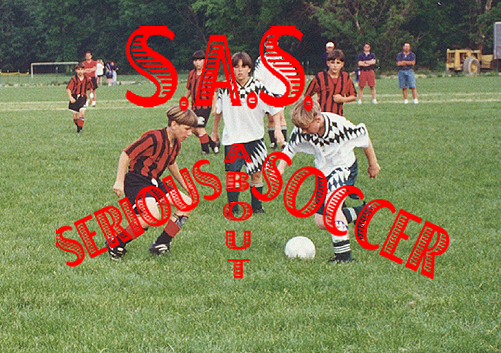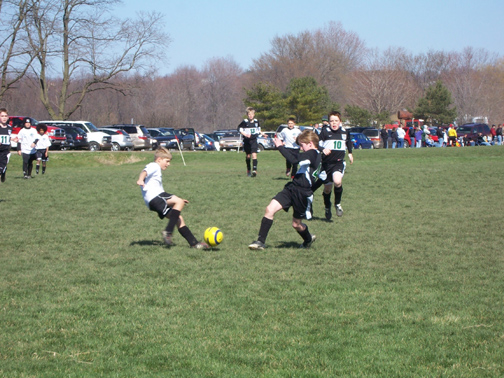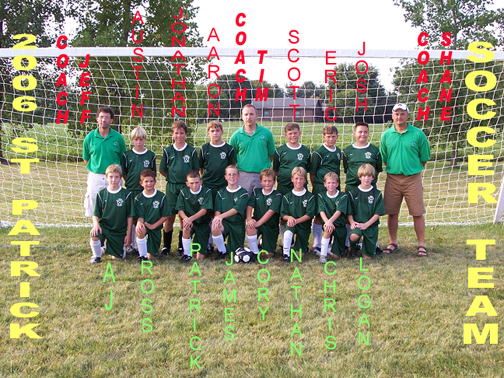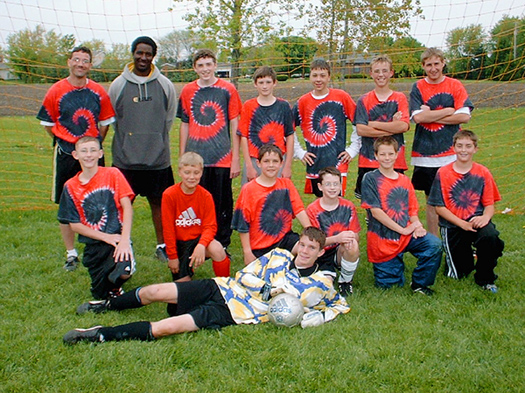News and Announcements
hideYou must log in to view statistics for LA COSTA CANYON HIGH SCHOOL BASEBALL
Serious About Soccer SKILLS! Maybe you should be.
Posted by Jeff Stiffler at Apr 17, 2007 5:00PM PDT
( 0 Comments
)
S. A. S.
SERIOUS
ABOUT
SOCCER
S. A. S. by: Jeff Stiffler
Serious About Soccer
As I start to receive phone calls and emails, It is time to start again.
. S A S SOCCER SKILLS
*** STARTING SOON ***
This Program will continue into the fall.
Fees will be $30.00 per participant-Due on your 1st day.
Keep practicing.
Practice does make a better player.
Thanks. Jeff.
As a soccer player, you need to keep yourself motivated. When you feel that you are not being challenged enough, or that you feel you’re not playing hard enough, chances are, you’re not. How can I help you change that? This is the key question that I have been asking myself for a while. I want the players to want to get better by pushing themselves to be as great as they wish to be.
I tried to put together what should be some GOALS & OBJECTIVES:
· Create a learning environment.
· To have lots of FUN.
· Get as many touches on the ball as possible
· Get the players to practice on their own
· Parents involvement
· Produce Competitive soccer players (10 yrs old & up)
· To teach team unity
· To win as well as loose
· Help you feel better about yourself
· Get the player to push themselves to the next level
· To play on their own in the back yard, or at a friends yard, or anywhere
· To become a positive, and supportive soccer player on and off the field.
I want players to have fun playing the game. I want to see the kids grow as a player in a positive, and encouraging environment and sport.
The soccer players have a chance to better their skills, and compete against other players in this league, as well as against other players from all over the world.
They will climb the ladder to success, and become better players. They can work at their own pace, and excel at their own pace. It will require them to spend some time with a ball instead of a play station, or xbox. Has anyone ever seen me put the ball to the foot of another player from 40 yards away? That’s what I want to see you be able to do. Have you ever set up a crossing play for a winning goal from a header? It’s sweet, but it takes practice to be good, and it takes more practice to be great, and it takes most of your time to be a Pro. What do you want? Soccer is about TOUCH and CONTROL, and this is what we will focus on.
I just want the young players, as well as the older ones, to feel better about their abilities as a player, so that they have a more positive experience playing soccer.
If they don’t have fun, they will get bunt-out and quit. If they have fun, and learn, and have good experience, they will be playing soccer for many, many years to come.
Perhaps they will play pro, or perhaps coach soccer themselves later on.
Thank You so much for allowing us the chance to help you become a better soccer player.
Jeff Stiffler.
PO Box 48
London, Oh 43140
614-306-3742
This is going to be a developing program for the players that wish to learn more, and become a better player.
It will be small sided games based on the theory of Soccer in the Streets. We are looking at 5v5 player’s games.
The theory is to get the players out there with as much play time as possible, with as many touches on the ball that they can get.
The teams may have 5-6 players. 4 field players including a goalie on smaller fields.
All soccer rules will apply in the 4v4 Games. (maybe 5v5)
The teams will be made as fair as we can.
We wish to make this as fair as possible.
Please have fun and a good time.
SKILLS TRAINING PROGRAM.
SKILLS WITH GOALS IN MIND!
THIS WILL BE FOR THE SERIOUS SOCCER MINDS.
.



St Pats Soccer 06 finishes #1for the season.
Posted by Jeff Stiffler at Sep 3, 2006 5:00PM PDT
( 0 Comments
)
St Patrick 5th-6th gradde reserve Soccer Team finishes #1 in Div 1.
and finished 3rd in tournaments.
GREAT JOB ST PATS.

This is the MC United Team from Fall 02 / Spring 03.

Getting back defensively
When a defender is marking a player with the ball
and that player passes the ball, there is a
tendency to do one of two things. Either the
defender decides to chase the ball to wherever it
was passed OR they stop playing and relaxes with
the idea that their job is done.
Generally speaking, both of the above decisions
are the wrong ones. The reason players shouldn’t
automatically chase after the ball is that the
ball can travel much faster than the player so it
turns into a useless chase PLUS it frequently
results in the defender getting caught so far out
of position that not only can’t they put pressure on
the player with the ball, but they also can’t help
mark the player they just left. There are a few
occasions when following the pass defensively is
the right decision and those are usually when the
pass is an EXTREMELY short one and there is
defensive support behind but this situation is
much less frequent than defenders think. The
problem with the defender relaxing after his
player passes the ball is that it allows the
player he is marking to make a run to get behind
him and at that point, he is beat (for example, a
wall pass will beat this type of defender every
time).
As a general rule, the proper thing to do when a
player you are marking passes the ball is to get
back quickly. By doing this, it eliminates the
chances for success of a wall pass plus allows the
defender to provide support by becoming the second
or third defender.
Getting back defensively after a pass is hit is an
easy thing to do IF you remember to do it! This
is where communication becomes vital since players
behind the defender (keeper, sweeper or other
defenders) should be directing the defender what
to do as much as possible.
.
KEEP YOUR HEAD UP WHILE DRIBBLING..
Posted by Jeff Stiffler at Feb 28, 2004 4:00PM PST
( 0 Comments
)
Today’s topic deals with keeping your head up
while dribbling.
One of the hardest things to do when dribbling is
to see the ball and also to see what is happening
around you. If you watch really good players it
looks like they don’t have to look at the ball
when they dribble and when you look at lower level
players it looks like they have to stare at the
ball when dribbling.
The reality is that even top players have to see
the ball when dribbling but the difference is they
know they can see the ball and also see the field
at the same time. The good news is that this is a
“skill” that can be worked on and improved.
Start with a soccer ball on the ground right in
front of your feet. Look straight ahead and see
if you see the ball at your feet. If you can,
that means you can dribble the ball while
looking straight ahead and still see the ball. If
you can’t see the ball while looking straight
ahead, then slowly lower your head (the key here
is to do so lower) until you can see the ball with
your peripheral vision. This is the point where
you will be able to look forward and also see the
ball.
Once you determine how far ahead you can see while
watching the ball at your feet, the next step is
to practice dribbling while keeping your head up
to the level where you can still see the ball.
This can be done by dribbling randomly in an area,
or dribbling around cones or really by doing any
type of dribbling you want. The more you
practice dribbling with your head up, the more you
realize how much you can see while also watching
the ball
Learning to see many things at the same time will
help you become a much better soccer player.